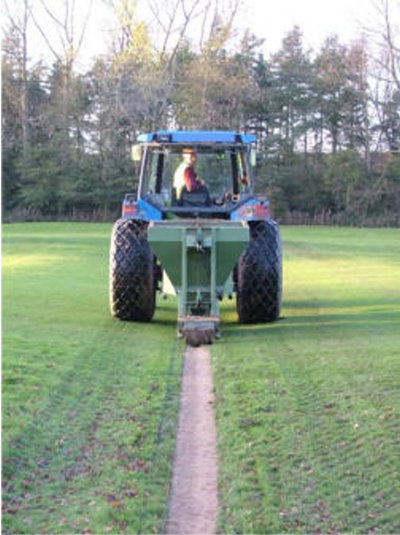 Due to the current heatwave soil conditions are very dry. Many areas have had below average rainfall and above average temperatures this year. This has already resulted in trenchline settlement in some areas.
Due to the current heatwave soil conditions are very dry. Many areas have had below average rainfall and above average temperatures this year. This has already resulted in trenchline settlement in some areas.
If these conditions continue, soil shrinkage causing settlement of drainage trench lines on sports and amenity turf is likely to be a widespread problem again in 2013 as it was in 2011. Operators of sports facilities should be aware that the problem can occur especially on clay soil sites. This can affect new drainage installations and possibly existing ones in severe drought conditions. Those having drainage installed should ensure that remedial measures to cater for possible trench settlement are agreed with the drainage contractor in advance. Those with an existing drainage scheme should seek advice on how best to minimise the problem if it occurs.
Prolonged periods of dry weather can result in a phenomenon associated with soils of high plasticity and expansion related to moisture content. Shrinkage of such soils – due to soil and ground moisture deficit – can result in subsidence of buildings, cracking of roads, and in respect of trenching, settlement of trench lines.
Settlement or cracking within trench lines in agricultural environments is not generally a problem and, indeed, is considered beneficial to the restructuring of consolidated or compacted soils.
However, the leisure and amenity sector can suffer to varying degrees, in some extreme cases sports turf facilities may be rendered no longer fit for use due to the hazard caused by cracking or settled trench lines.
The clay soils of the British Isles retain soil moisture with great tenacity. Water will only be drained from a soil once field capacity has been achieved; the drainage scheme will remove surplus soil water.
A sports turf facility equipped with a drainage scheme will typically have a network of mains and lateral pipe work spaced at between 3 and 10 metre centres. The pipes are installed within excavated trenches and are backfilled with aggregate. Tri-axial shrinkage of the clay soils leads to increased trench widths allowing the backfill materials to settle causing depressions on the surface.
In addition to primary piped systems, secondary slit systems are often installed, offering improved surface drainage characteristics through either excavated or injected gravel or sand slits.
Clay soil shrinkage promotes natural cracking of the soils; these cracks will take the line of least structural resistance – specifically trench or slit lines. Exceptionally dry conditions can cause the drying of soil profiles to unprecedented depths with very low soil moisture content at depths exceeding 600mm.
The resultant soil shrinkage and cracking could generate settlement of trench and slit lines on both newly installed and, more surprisingly, existing established schemes which have been installed for a number of years. Where trench or slit lines have grassed over this settlement can present an unseen hazard to players on sportsturf and to horses on equestrian facilities and racecourses.
It should be stressed that trenchline settlement is not usually due to poor installation by the contractor. Even in correctly installed drainage schemes some settlement can occur naturally to a greater or lesser extent in most years. Once settlement has occurred, remediation measures are limited to topping up. On intensive schemes, general sand or root zone top dressing may be an option but deep settlement will require specific application to individual trench lines by means of specialist equipment operated by specialist contractors.
Land Drainage Contractors Association www.ldca.org

